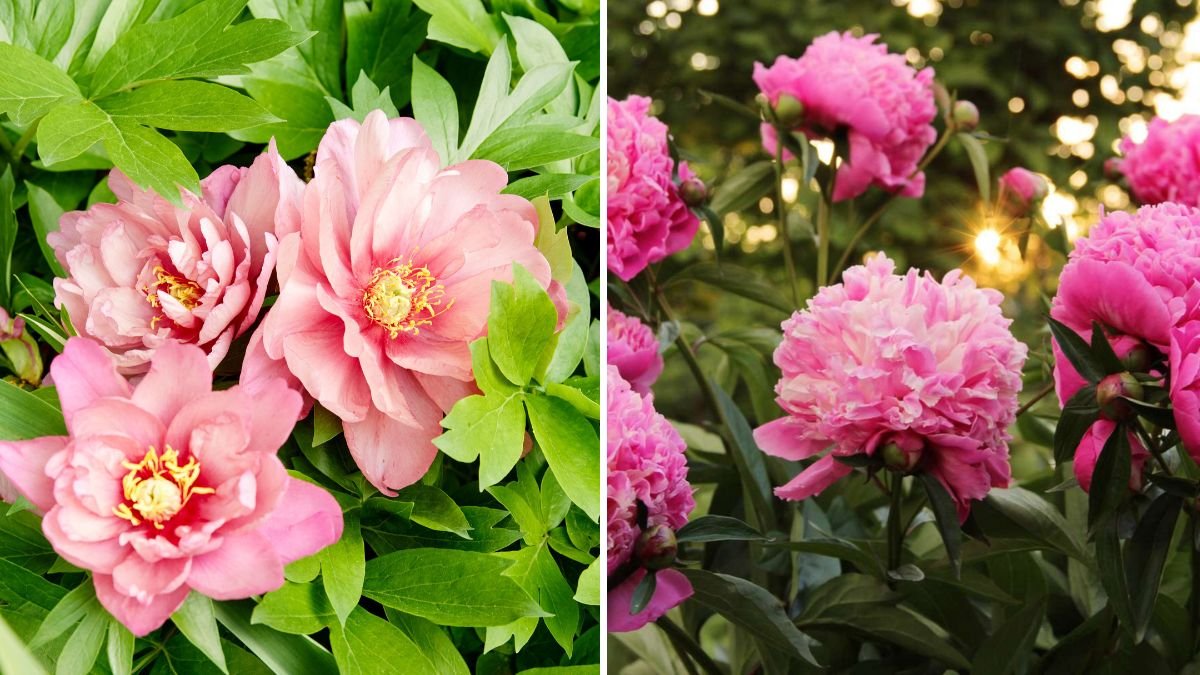Peonies (Paeonia spp.) are among the most beloved garden perennials, admired for their large, lush blooms, captivating fragrance, and elegant foliage. They can instantly elevate any garden with their romantic and timeless appeal, whether planted in formal beds or mixed borders. However, the beauty of peonies can be further enhanced by pairing them with carefully selected companion plants.
Companion planting not only amplifies aesthetic appeal but also provides practical benefits, such as improved pollinator attraction, extended bloom seasons, and balanced garden composition. In this article, we’ll explore six plants that look gorgeous with peonies, why they work well together, and tips for creating stunning garden combinations.
Why Companion Plants Matter for Peonies
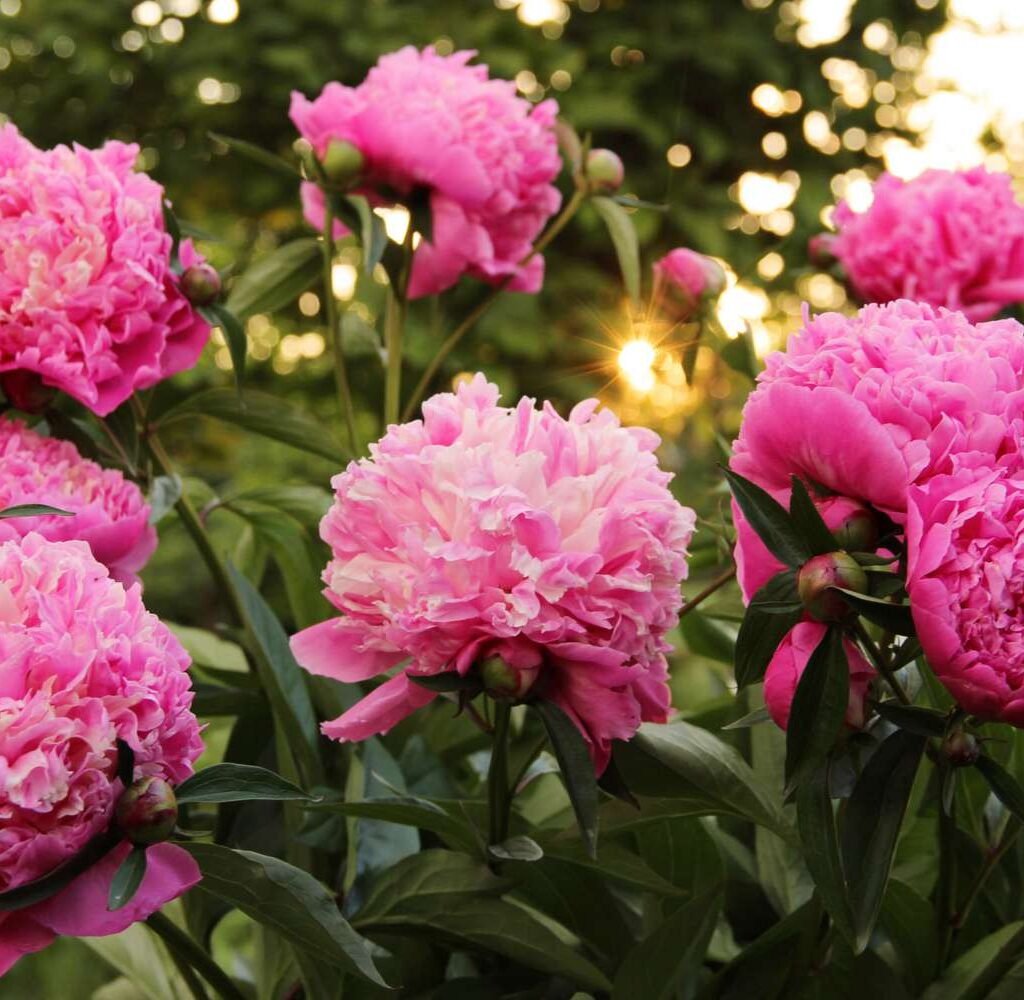
Peonies are relatively low-maintenance perennials but benefit from thoughtful companion planting:
- Aesthetic contrast: Different foliage shapes and flower forms highlight peony blooms.
- Extended visual interest: Combining plants with varying bloom times ensures continuous color.
- Support for pollinators: Companion plants attract bees, butterflies, and other beneficial insects.
- Soil and microclimate balance: Some companions can improve soil structure or moisture retention around peonies.
The key is to select plants that thrive in similar growing conditions—full sun to partial shade and well-drained soil—without overwhelming the peonies’ shallow roots.
1. Lavender (Lavandula spp.)
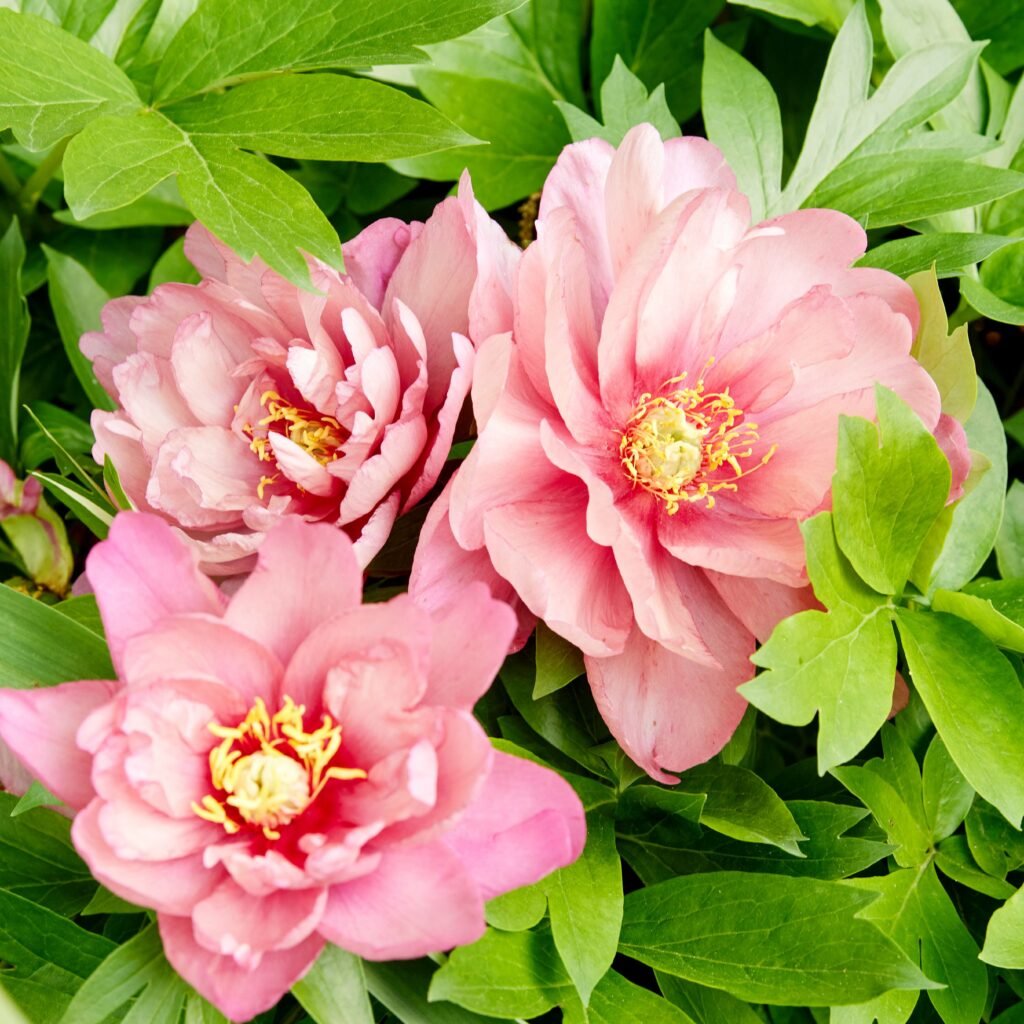
Lavender is a classic companion that brings fragrance, color, and texture to peony gardens.
Why It Works:
- Purple spikes contrast beautifully with peony’s large, soft blooms.
- Aromatic foliage deters pests while attracting pollinators like bees and butterflies.
- Both plants thrive in sunny, well-drained soil, making them compatible garden partners.
Planting Tips:
- Position lavender around peony beds to frame blooms naturally.
- Avoid overwatering near peonies, as lavender prefers drier conditions once established.
- Prune lavender after flowering to maintain a neat shape.
Expert Insight: Lavender’s gray-green foliage creates a stunning backdrop for pink, white, or red peonies, adding depth and visual harmony.
2. Salvia (Salvia spp.)
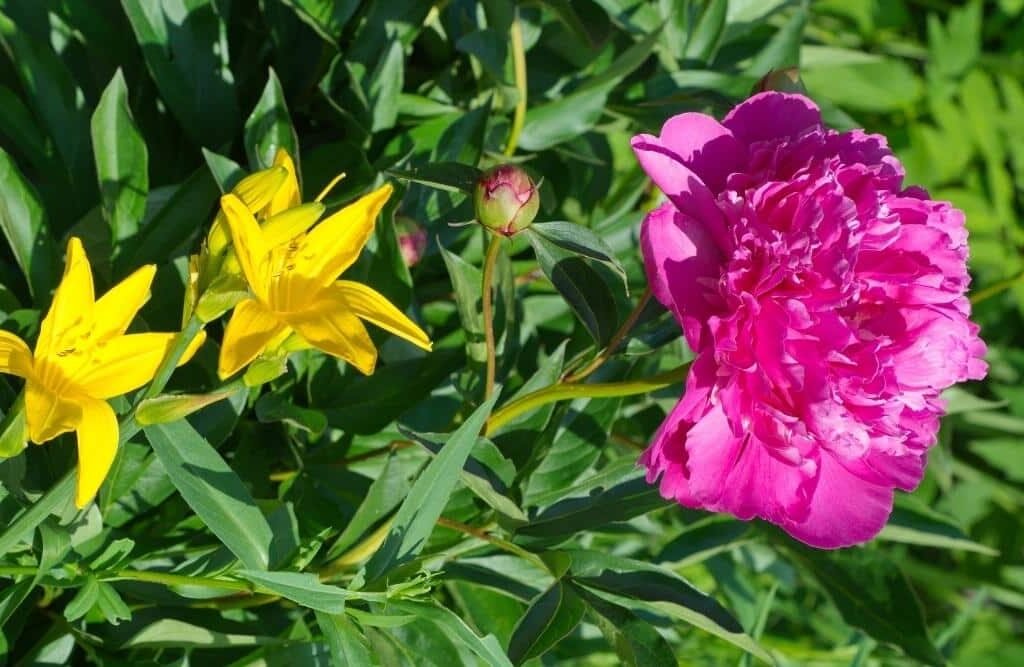
Salvia is a versatile perennial with vibrant spikes of blue, purple, or red flowers.
Why It Works:
- Tall, spiky flowers contrast with peonies’ rounded heads.
- Attracts pollinators, enhancing the overall garden ecosystem.
- Long-lasting blooms extend the visual season beyond peony flowering.
Planting Tips:
- Plant salvia behind or beside peonies for height contrast.
- Choose varieties that complement the color palette of your peonies.
- Deadhead spent flowers to encourage continuous blooming.
Expert Insight: Salvia’s vertical lines create a dramatic counterpoint to the softness of peonies, balancing form and structure in mixed borders.
3. Catmint (Nepeta spp.)
Catmint is a hardy perennial known for soft, aromatic foliage and delicate lavender-blue blooms.
Why It Works:
- Mounding habit and long bloom period enhance peony displays without overshadowing them.
- Attracts bees and butterflies, promoting pollination and biodiversity.
- Aromatic foliage repels pests naturally.
Planting Tips:
- Space catmint in front of peonies to create a soft, colorful border.
- Trim after flowering to maintain a tidy appearance and encourage reblooming.
- Combine with other mid-height perennials for layered garden design.
Expert Insight: Catmint adds flowing movement and texture beneath or alongside peonies, softening the garden edges.
4. Alliums (Allium spp.)
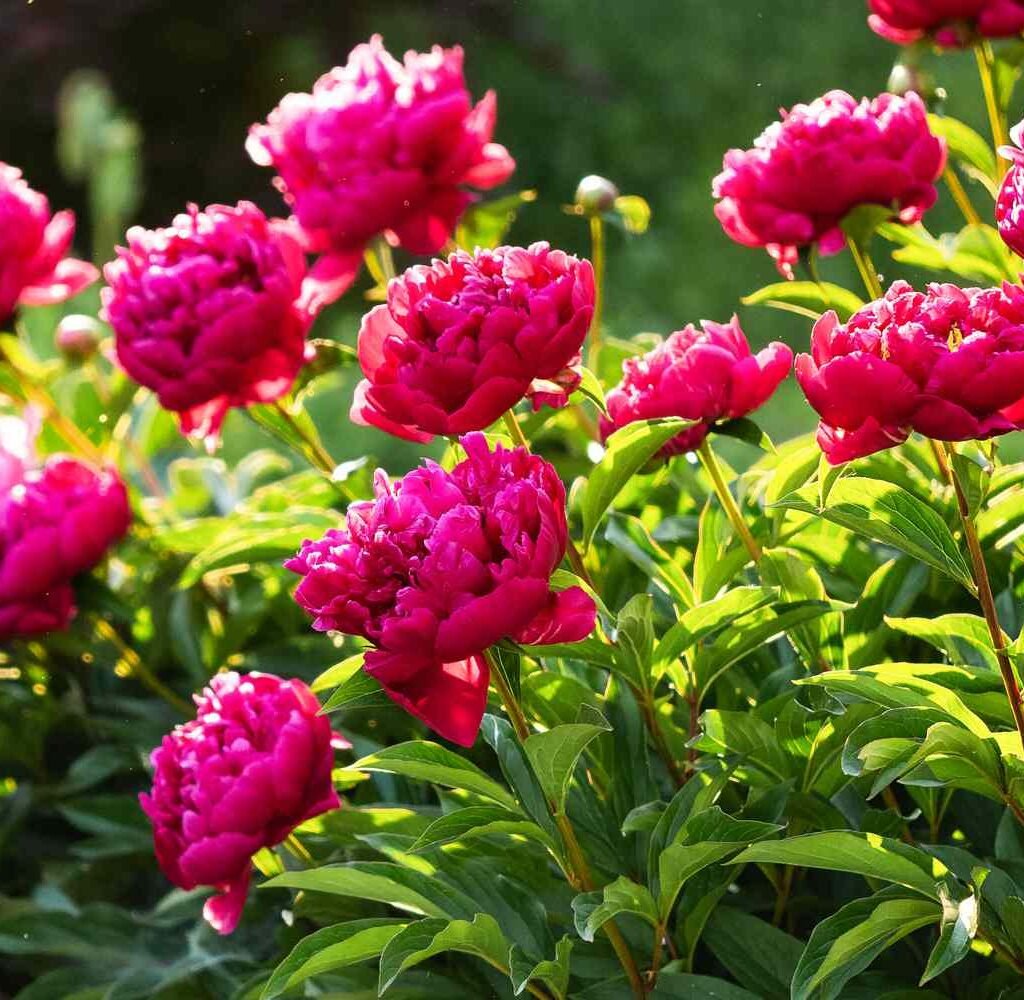
Alliums, with their architectural globe-shaped blooms, bring structural interest to peony gardens.
Why It Works:
- Tall stems and spherical flowers contrast with peony’s rounded petals.
- Early- to mid-spring bloom times lead into the peony flowering season, creating continuity.
- Foliage dies back cleanly, leaving no competition during peony peak bloom.
Planting Tips:
- Plant alliums in clusters for maximum visual impact.
- Select colors that complement peony hues, such as purple or white.
- Place taller varieties toward the back of the bed to avoid shading peonies.
Expert Insight: Alliums provide architectural drama and contrast, making peony gardens visually striking while extending seasonal interest.
5. Ferns (Various Genera)
Ferns add textural elegance and a woodland feel to peony beds.
Why It Works:
- Delicate, feathery fronds contrast beautifully with bold peony flowers.
- Shade-tolerant varieties fill spaces beneath larger peonies, creating layered effects.
- Evergreen or deciduous ferns provide year-round foliage interest.
Planting Tips:
- Plant ferns in partial shade areas, particularly if peonies are planted near taller shrubs or trees.
- Maintain consistently moist soil to support fern growth without waterlogging peony roots.
- Combine with hostas or heucheras for multi-textured ground coverage.
Expert Insight: Ferns create a lush, green foundation that highlights peony blooms while softening the overall garden design.
6. Heuchera (Coral Bells)
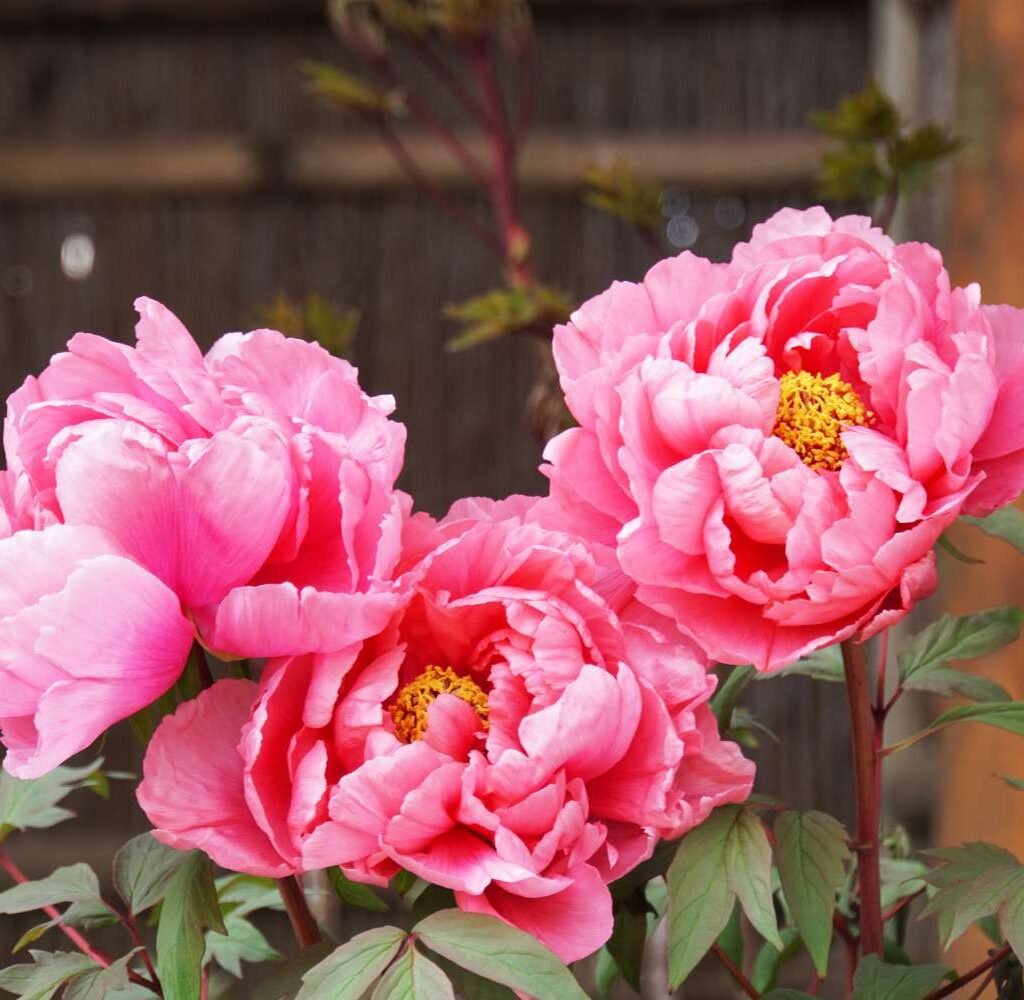
Heucheras are low-growing perennials prized for colorful foliage and delicate flowers.
Why It Works:
- Foliage comes in shades of burgundy, lime, purple, and silver, complementing peony colors.
- Small, airy flowers add subtle interest without competing with peonies.
- Shade-tolerant and adaptable, making them ideal for under-planting or borders.
Planting Tips:
- Plant at the base of peonies for a layered, colorful effect.
- Mix different Heuchera varieties for continuous color contrast.
- Ensure good drainage to prevent root rot.
Expert Insight: Heucheras provide a vibrant ground layer, emphasizing peony blooms while supporting pollinators.
Tips for Designing a Gorgeous Peony Garden
- Consider Bloom Timing: Choose companion plants that bloom before, during, or after peonies to maintain seasonal color.
- Mix Textures and Heights: Combine tall spikes, mounding plants, and low groundcovers for layered interest.
- Complement Colors: Use foliage and flower colors that enhance peony hues rather than clash.
- Provide Adequate Space: Peonies need airflow to reduce fungal issues; companions should not overcrowd the base.
- Support Pollinators: Many companions attract beneficial insects that enhance peony flowering and seed production.
- Mulch and Water Appropriately: Maintain consistent moisture without waterlogging roots, benefiting both peonies and companions.
Benefits of Companion Plants With Peonies
- Extended Visual Interest: Complementary blooms extend the season of color.
- Pollinator Attraction: Bees, butterflies, and beneficial insects thrive in diverse plantings.
- Enhanced Aesthetics: Textural and color contrasts make peony blooms pop.
- Ecosystem Support: Companion plants improve soil health and biodiversity.
- Low-Maintenance Harmony: Properly selected companions support peony growth without competing aggressively.
Conclusion
Peonies are stunning focal points in any garden, but their beauty is amplified by thoughtful companion planting. Lavender, salvia, catmint, alliums, ferns, and heucheras provide texture, color contrast, and ecological benefits, creating lush, layered, and pollinator-friendly beds.
By considering bloom timing, plant height, and color harmony, gardeners can design vibrant, low-maintenance gardens that showcase peonies at their peak while maintaining interest throughout the season. With the right companion plants, your peony garden can become a breathtaking landscape feature that delights the senses and supports a healthy, thriving ecosystem.
